If you do
NOT see the Table of Contents frame to the left of this page, then
Click here to open 'USArmyGermany'
frameset |
US Army Transportation Terminal Command, Europe
US Army, Europe
Looking for more information from military/civilian
personnel assigned to or associated with the U.S. Army
in Germany from 1945 to 1989. If you have any
stories or thoughts on the subject, please contact me . .
|
|
|
|
|
|
| Transportation Terminal Unit, Greece |
| |
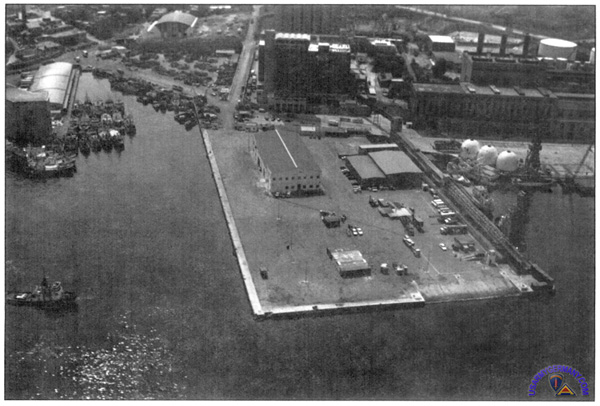
MTMC transportation terminal at Piraeus, c. 1990
|
| |
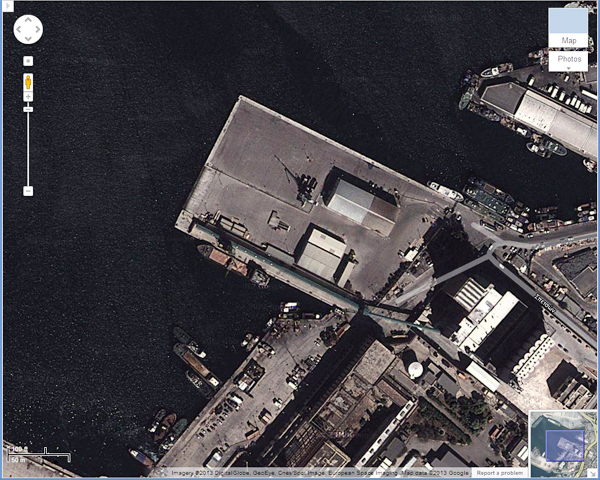
Former Piraeus Terminal (Google)
|
|
|
| 1972 |

TRANSLOG article on TTU Greece, Nov 1972 |
|
|
| 1973 |

TTU Greece section, JUSMAGG Directory, April 1973 |
|
|
| 1974 |

TRANSLOG article on TTU Greece, March 1974 |
|
|

Sign at TTU Greece headquarters (US Army Transportation Corps)
(Click on image to see an enhanced view) |
| |

Sign at TTU Greece headquarters (US Army Transportation Corps)
(Click on image to see an enhanced view) |
| |

Location of former US Army Transportation Terminal Unit at the Port of Piraeus (GOOGLE Maps) |
| |
TTU activity, possibly 1980s (US Army Trasportation Corps photos)
(Click on images to see an enhanced view)
|
|
| |
| 1991 |
| (Source: TRANSPORTATION CORPS, July 1991) |
TTU-Greece
by Lt Col Dawson S. Goodwin
LTC Dawson was CO of MTMC, TTU-Greece
Friends and relatives thought I was lucky when they learned of my assignment as commander of the Military Traffic Management Command (MTMC) Transportation Terminal Unit (TTU) in Greece. All the travel brochures that I received advertised fun in the Grecian sun and daily cruises to the many islands dotting the Aegean Sea. While all of that was true, the brochures failed to mention the high terrorist threat, base closures, and the war in the Persian Gulf. They also failed to mention the effect that any of those things would have on this small but proud unit located about 12 miles south of Athens in the port of Piraeus.
As the song goes, "The times they are a changing" and this TTU is going to write another verse and chapter to its long and varied history. The Transportation Terminal Unit Greece was established in 1949 as a port liaison team under the Transportation Division, Joint U.S. Military Aid Group, Greece (JUSMAGG) with one American officer and a small group of Greek employees. Ten years later, the TTU was officially designated as the Transportation Terminal Unit organized under the Director of Transportation, Department of the Army, with operational control still under JUSMAGG. This period also marked the beginning of our logistical support relationship with the 7206th Air Base Group located at Hellenikon Air Base (HAB).
In 1964, U.S. Air Force Europe (USAFE) assumed water terminal responsibilities under the "dominant user" concept and the TTU became known affectionately as an "Air Force funded terminal." This meant that the TTU commander wore three hats -- Army, Air Force, and Department of State. Since then, commanders have had fun figuring out how to wear all of those hats and get the mission accomplished. During this period, the TTU was moved to its present location at Keratsini Bay, Pireaus. Here, it shares pier and one end of a combination warehouse/office building with the Hellenic Military Port Command. In 1965, command of the TTU was passed to MTMC Eastern Area and then, in 1977, it was reassigned to the MTMC Terminal Command, Europe, which is now known as MTMC-Europe. Logistical and operating budget support continued to be provided by USAFE.
Our mission is to provide ocean terminal service at all ports in Greece for all Department of Defense sponsored cargo in support of U.S. forces and agencies. That mission is the same in peace as it is in war. In addition, the TTU is the Military Sealift Command's representative for Greece and Crete and it is frequently called upon to provide information on ocean transportation assets and capabilities of other Greek port facilities. The TTU acts as the transfer agent for the Office of Defense Cooperation (ODC) and overseas vessel operations involving foreign military sales (FMS) cargo to the Government of Greece.
The recently renovated terminal facilities include 2,831 square feet of modern office space; 17,847 square feet of expanded warehouse space; and 150,000 square feet of pier hardstand. The pier has two working faces. One is 397 feet long with a 127-foot roll on/roll off (RO/RO) ramp, and the other is 665 feet long. With a little coordination with the local fishermen, the 665-foot pier can accommodate vessels up to 770 feet, such as the Cape Domingo class RO/RO vessel. Although there are no fixed crane facilities at the TTU, there are sufficient wheeled and floating cranes with capacities up to 100 tons available from the Greek Port Monopoly. In addition, the TTU operates two portable ramps capable of handling up to three containers simultaneously for stuffing/unstuffing operations. Organic equipment includes two 10K-forklifts, two 6K-forklifts, two 600-gallon fuel pods, and one warehouse tug for cargo operations. Administrative use vehicles are all indigenous vehicles designed to reduce our profile during normal operations. Each of the two sedans, one carry all, and one pickup truck are equipped with land mobile radios.
A local stevedore contractor provides labor to help discharge and load vessels and containers. All other work, such as documentation, customs, warehousing, pier operations, port planning, supply, training, administration and accounting is performed by local national employees. Cargo clearance is a particularly cumbersome mission in Greece and often requires trips to one or more of the port's six different customs houses. The TTU maintains excellent relations with local customs officials and is often called upon to resolve customs disputes for DOD customers. During a recent visit, the Military Traffic Management Command commander noted that the TTU represented a model TTU because of its excellent facilities and ability to handle any cargo within its organic capability.
The announced base closures of the Naval Communications Station (NAVCOMSTA) Nea Makri and the 7206th Air Base Group (ABG) at Hellenikon marked the end of an era in American military presence on the mainland of Greece. The NAVCOMSTA was first to close-seven months after the Department of Defense announcement. The TTU dispatched documentation teams to the NAVCOMSTA early on to assist in the proper preparation of documentation and planning to execute this mission smoothly. Later, the Operations Branch of the TTU dispatched a supervisor and skilled labor personnel to teach proper packing and loading techniques for commercial SEAVANS. As a result, all cargo was properly accounted for and expeditiously moved. This resulted in a base closure 45 days ahead of schedule.
Personnel reductions at USAFE resulted in a loss of two TTU civilian spaces at the beginning of the Hellenikon Air Base closure process. Consequently, the TTU had to reorganize to accomplish the largest mission in its history. Anyone who has been around the military very long quickly learns to adapt to "doing more with less." The tough, resilient workforce ofthe TTUis no exception. With the lessons learned from the Navy drawdown, the TTU and HAB worked very closely, and they established a viable documentation and transportation system to complement each other's strengths and weaknesses. As of this writing, the HAB base closure is ahead of schedule and all of the major milestones have been accomplished. Operations DESERT SHIELD and DESERT STORM were also successfully supported during the same period. Particularly noteworthy was the successful relocation of the 922d Strategic Squadron-Strategic Air Command from HAB to Souda Bay by sea in a 48-hour period without any interruption in their support to OPERATION DESERT STORM.
The TTU will miss its friends at the NAVCOMSTA and HAB and the excellent support they provided. We are looking forward to developing new relationships with the 7276th ABG on Crete and as always, we stand ready to provide ocean terminal services in support of any mission, anywhere in Greece. As we turn the final pages on this chapter in our proud history, we are already looking forward to writing a new one. The men and women of the TTU have operated in a tough, high threat environment, but through it all they have maintained a positive "can do" attitude. They have clearly lived up to the proud motto NOBODY DOES IT BETTER. |
|
 |
|
|
| Transportation Terminal Unit, Turkey |
| |
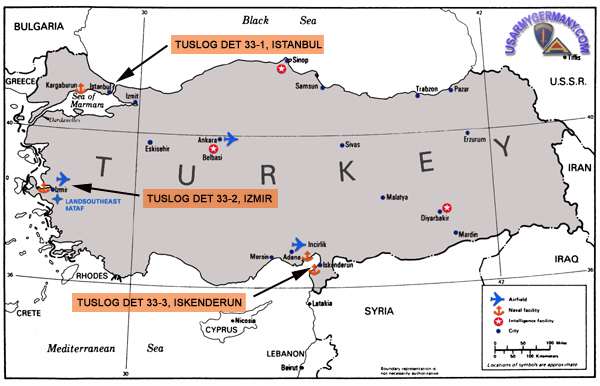
TUSLOG Detachment 33 transportation terminals, 1950s |
| |
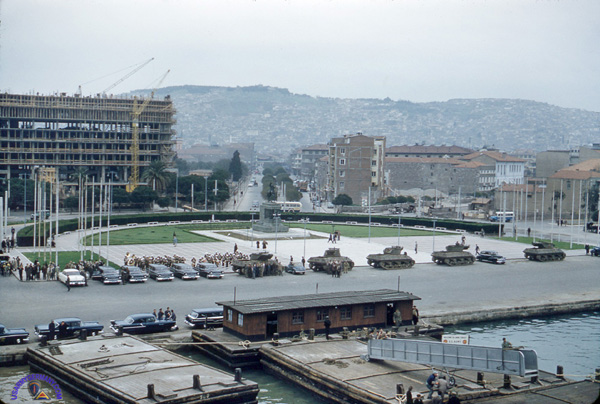
TUSLOG Detachment 33-2, Izmir |
| |
| (Source: STARS & STRIPES, April 25, 1963) |
TUSLOG Detachment 33, with headquarters in Istanbul, Turkey, is an Army unit operating port facilities under the command of an Air Force general (Brig Gen Baskin R. Lawrence, Jr., commander of US Logistic Group, Turkey, also known as TUSLOG).
The detachment is presently commanded by Col Alfred H. Crawford, and is split into three separate sections. Det 33-1 is collocated with Det hqs at Istanbul and operates the water terminal in that location. Det 33-2 is at Izmir and Det 33-3 at Iskenderun.
Det 33-1 (CO is Lt Col James F. Wolsher): Cargoes received at the Istanbul terminal are shipped by rail, truck or vessels to American installations at Sinop, Samsun and Trabazon on the Black Sea; and to Ankara and Deringe, among others.
Det 33-2 (CO is Lt Col Melvin M. Wolfe): The Izmir detachment serves a section of Turkey that includes Cigli Air Base, LANDSOUTHEAST and the 6th Allied Tactical Air Force.
Det 33-3 (CO is Maj Carl W. Altenburg): the Iskenderun detachment, in southeast Turkey, serves Adana.
The American forces have an arrangement with the Turkish government where Turkey provides stevedores and other personnel to help discharging shipments under the supervision of the three detachments. |
|
|
| |
| (Source: CARGO HOOK, Winter 1983, MTMC TTCE newsletter) |
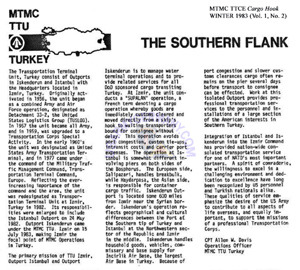 |
|
Article written by Capt Allen W. Davis, Operations Officer of TTU-Turkey, provides some history of TUSLOG Det 33 and an overview of operations of the transportation terminal unit in the early 1980s.
Copy of article courtesy of Merhaba Turkey website. |
|
|
|
| TUSLOG 33-1, Istanbul |
| |
| (Source: TRANSLOG, June 1973) |
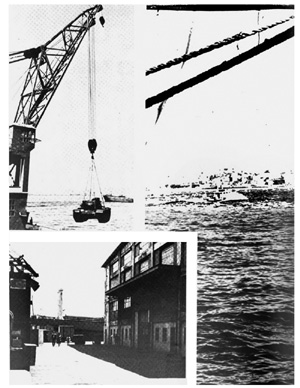 |
|
Article written by Lt Col John A. Pierce, Commander, USATTU Istanbul, provides some history of TUSLOG Det 33-1 at Istanbul and an overview of terminal operations at the port of historic Istanbul in the early 1970s.
|
|
|
| |
| TUSLOG 33-3, Iskenderun |
| |
| (Source: CARGO HOOK, Winter 1983, MTMC TTCE newsletter) |
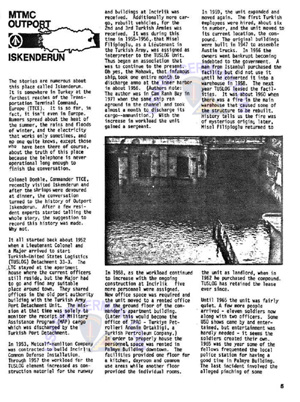 |
|
Article written by Maj David C. Fountain, Chief, MTMC Outport Iskenderun, provides some history of TUSLOG Det 33-3 at Iskenderun and an overview of operations of the outport unit in the early 1980s.
|
|
|
| |
(Source: article written by Major David C. Fountain, Chief, MTMC Outport Iskenderun in TRANSLOG, April 1984)
(Webmaster note: the following article is a shorter version of the above article that appeared in the MTMC TTCE Cargo Hook) |
Iskenderun evokes comment from all who have been there or heard the myriad stories spun about it. Located in the southeastern tip of Turkey on the border of Syria, lskenderun remains shrouded in myth, a kind of shadowy station at the farthest reaches of MTMC Transportation Terminal Command. Europe.
Rumors spread about blazing summer heat, winter rains and floods. Electricity works sometimes. No one known, except those who have been there, how much is true, how much is exaggeration. Poor telephone connections tend to confirm suspicions that many rumors are true.
MTMC Outport Iskenderun history started in 1952 when two officers arrived to set up the Turkish-United States Logistics (TUSLOG) Detachment 33-3. The officers shared offices in the old port authority building with the Turkish Army Port Detachment Unit. The mission at that time was solely to monitor receipt of Military Assistance Program (MAP) cargo which was discharged by the Turkish Port Detachment.
In 1953, Metcalf-Hamilton Company was contracted to build Incirlik Common Defense Installation. Through 1957, TUSLOG element's workload increased as construction material for the runway and buildings at Incirlik was received, along with additional cargo and rebuilt vehicles for the 2nd and 3rd Turkish Armies. As a result, the office was moved to rented space on the ground floor of the commander's apartment building to accommodate additional personnel being assigned to the unit. Space was also rented in a downtown building to properly house personnel.
In 1959, the first Turkish employees were hired and the unit moved to its current location. Barracks were built on top of the main warehouse in 1965 to house the soldiers at the compound. Today, these facilities include barracks rooms, a kitchen and dining room, Iaundry facilities, a library and theater, music and television rooms.
Many changes have been made to the compound since 1969, including addition of offices for the commander and expansion of the operations offices to provide space for all employees.
And then the infamous floods came. In 1969, Iskenderun had no major drainage systems to channel water runoff through the city. When the water in the compound rose to more than two feet in height, a boat was used to get around the facility. Pumping out the water took three days.
When the compound flooded again in 1975, the floor was elevated two and a half feet and the city began constructing canals to properly channel the water.
In 1982, TUSLOG Det 33-3 changed its official name to MTMC Outport Iskenderun. Headquarters for Iskenderun and all MTMC posts in Turkey is Izmir, located on the southwestern coast, next to Greece.
Iskenderun may have the warmest weather in the command. Its climate follows typical Mediterranean patterns of hot summers, mild winters and heavy rains which frequently cause flooding.
Though reports of loss of electricity and exasperating communications persist, this can, for the most part, be explained as typical for an area so remotely detached from the kinds of comforts we so often take for granted. Iskenderun does have electricity -- sometimes. Telephone service continues to be poor, but rumors suggest that next year things will improve.
Amidst all the tall tales, one doesn't lose sight of the fact that Iskenderun people perform a vital mission, sometimes under trying conditions. And that is no rumor. |
|
|
| |
| 1960 |
| (Source: Email from Al Cammarata, USAF, Iskenderun 1960-61) |
I was an Air Force radio operator stationed at Incirlik, Turkey April 1960-Oct 1961. From June 1960-June 1961 I was assigned on operating location to Det 33-3 USATTU Iskenderun, Turkey.
The USAF provided communications and also manned the cold storage/warehouse facility. Most of the cargoes were in support of Incirlik AB. The Det. also handled cargoes for Turkish military in support of NATO. There was also a USAF fuel storage facility acrosss the bay at Yumurtalik and a NATO storage facility in Iskenderun. Fuel was offloaded at both facilities.
I have posted my USAF memoirs which include my experiences at Iskenderun on the Merhaba Turkey website which is dedicated to US military who served in Turkey. Since posting my memories, I have connected with 4 other airmen who served at Iskenderun before and after my time there.
If you are intersted, I believe you may find these stories of historical value for the unit history of TUSLOG Det 33-3. (To read Al's recollections of his time in Turkey, click here) |
|
| |
ADDITIONAL INFORMATION
Most of your questions are answered in my "story." To answer some of your questions:
Q: Can you provide some details on the AF communications capabilities at Iskenderun?
Ken Boultenhouse (see his story) is the earliest we have found. I assume from the time Det 33-3 started that communications was via unclassified HF CW Morse radio. I don't mention it in my story but when I got there the radio net was callsign:
 66X Ankara (net control) 66X Ankara (net control)
 66XA Istanbul 66XA Istanbul
 66XB Iskenderun 66XB Iskenderun
Most of our incoming traffic originated at Istanbul. It was sent to Ankara and Ankara retransmitted it to us. We sent our outgoing traffic to Ankara and Ankara relayed it to Istanbul. Why, I don't know because we could hear one another.
About 3 weeks after I arrived (June/July 1960) Ankara said they were closing down and assigned Istanbul as net control. From then on the radio link was Iskenderun-Istanbul. I recently connected via Merhaba with Bill Lewis, the 2nd radio operator I worked with who arrived March/April 1961. Bill said sometime in late 1961 or early 1962, they closed down the HF radio circuit and installed a teletype circuit with Incirlik. Bill said he thought the TTY was via landline. He served out his tour at Iskenderun as a TTY operator and commented he did not like it because he wasn't trained for it. He must have had another operator. Dont know if he was a radio operator or a trained TTY operator.
I am info'ing this to Ken Boultenhouse, Bill Lewis, Ed Roberts and Larry Sanders. All USAF communicators who served at Iskenderun before or after my time. They should be able to answer more specific questions about the TTY commo link or any other questions. All have posted their memoirs on Merhaba.
We also had an HF voice radio link with Yumurtalik, the USAF POL storage facility across the bay.
All enlisted Det 33-3 personnel were billeted in an apartment building on Ataturk Boulevard along the waterfront. Four USAF personnel, 2 radio operators, a radio technicinan/repairman and a rotating cold storage facility airman lived on the ground floor. Army lived on several upper floors. Two apartments on the 2nd floor were combined into a kitchen/mess hall with living quarters for an Army cook. Later, all personnel moved into living quaraters at the Det. compound. I dont know when but Ed or Larry can probably tell you. Our Det cmdr, Capt. Speelman, rented an apartment somewhere, I dont know where.
We have not been able to locate any Army personnel who served at Iskenderun. I obtained copies of MTMC newsletters about Turkey outport operations from Ft Eustis a few years ago. Jan Claire posted them on the merhaba under Iskenderun.
During my time we lived in town on the local economy and it definitely was the most memorable tour I had (in more ways than one). I have many fond memories of my time at Iskenderun serving with our Army partners.
PS I almost left out Servet Tumkaya a Turkish national now living in Adana, who had a prominent role with the Det 33-3 and I believe helped close the facility. |
|
|
| |
| 1970 |
| (Source: STARS & STRIPES, Oct 20, 1970) |
Army Lt Col William Benedict Strong, Jr. has assumed command of TUSLOG Det 33-3 at Iskenderun, replacing Lt Col Paul E. Clark.
Det 33-3 is responsible for all military cargo transported by sea to and from Southern Turkey. |
|
|
| |
| 1999 |
| (Source: TRANSLOG, Spring 1999) |
Iskenderun Detachment Closes
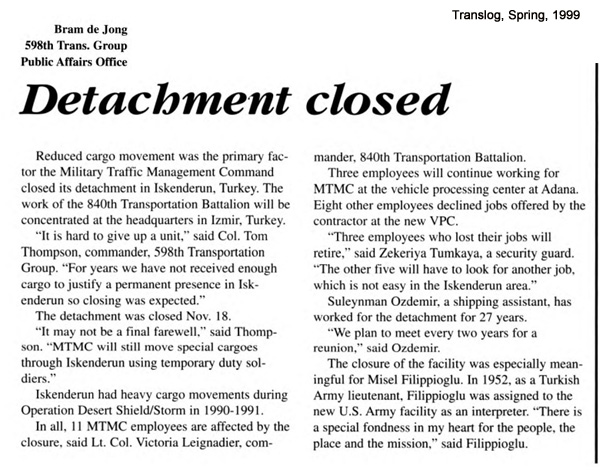 |
 |
|
|
Related
Links:
|
| |
| |
|
















